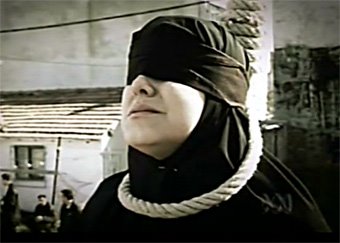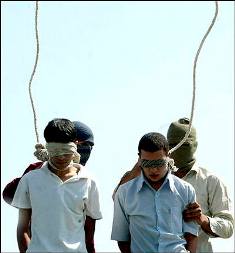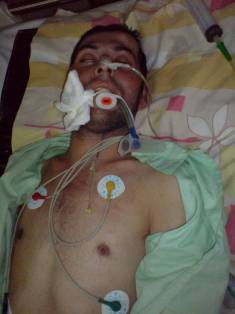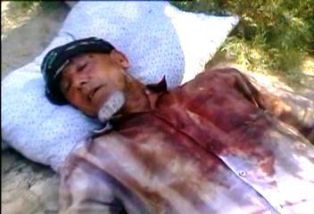Iranian Minorities’ Human Rights Organisation (IMHRO)
Ref.IMHRO.81
24.04.2011
The sources inside Ahwaz told IMHRO that clashes between Iranian police and Ahwazi demonstrators continued in south west of Iran. An Abadan, Mohammareh, Ahwaz, Falhieh, Hamidieh and various part of Ahwaz clashes continue. According to some reports Unrest was so wide spread that security forces asked for fresh forces. Peaceful demonstrators attacked by police on 15th of April. Security forces had a heavy presence, most main streets and squares are closed in big town and cities.
Some sources reported about 40 people had killed; IMHRO could confirm 27 people had killed by the names:
Ali neisi
Ali Matori
Mohammad Morabi
Hasan mansori
Kazem latifi
Mohamamd farahni
Sodeh abu rahamn
Ali mazaravi
Husain kaabi
Jafar helalatjamil ghobishavi
Abdul wahed Ahmadi
Naser lavimi
Hasan sharifi
Rasul heydari
Sadegh deris
Mansur torfi
Jasme mazraeh
Rahim saki
Younes sadawi
Heleiel mosavi
Taher jasemi
Foad kaabi
Karim jabberi
Abd al-Rahman Ibn Qasem al-Badawi
Basem Abiat
Yghub Khanfari
salahain beit hardan
Their family was told by security services to keep silent and not talk with the media. Some bodies still did not returned and many others who are wounded refuse of going to hospital, as fear of arrests by Iranian security service.
About 700 people arrested And following names of arrested people had reported so far: abdollah al kaabi, eisa neisi, ali safar al zergbani, abdolahh alfrhud al jeludi, Mohammad ibn al atab al sari and Shareeh al hadi, eisa sawari, al jawad al heidari, salam ababs abeiat, jamal nazal abeiat, jasem abeiat, ahmed veisi, abdolreza albu ghubish, mohammad al sari, sadegh tamimi, yasin bavi, haidar heidari, mohamamd Hassan albu ghuibish, rafieh zargani, Abdullah farhud jaldavi, eisa al sari, ali javad heidari. alsheikh ali abdularim alnamah (al-banitruf tribes).
The arrested people have been taken to unknown location. No new of any releases had reached IMHRO so far.
Arrests in Ahwaz started weeks before demonstration happened, cultural activist of Hani al dilemma was sentences to prison and exile in Mashhad in north of Iran, Sayed Bagher Alboshoka( atheletic), Jaber Alboshoka, Mokhtar Alboshoka( soldir in revolutionary guard) all from Khalafyeh arrested by security services and taken away. Mohammad ali omori, amir amori, shahid abdulhasin shabani nijad amori(poet), hashem khalaf shabani nijad( teacher), aghil aghili ( student), hadi rashedi, hashem shaban and saed amoee,habib alah rashedi.
Arab Ahwaz lecture in politics Hussein Hashemian was banned by security services after he talked with western media regard of recent events in the Middle East.
A cleric called sheikh Heidari also arrested and charged of leading illegal pray in 2006. In that pray which led into protest, few people who took a part in demonstration had disappeared and later their bodies discovered in plastic bags on bank of Karon river.
Saied Saki, born in 1969, a Ahwazi who was kidnaped by Syrian security service while he was in Syria as registered UNHCR refugee in 2005 and after spending a year in prison in Syria, the Syrian government handed him over to Iranian security service in 2006 and now he is sentenced to 10 year in prison, he reportedly tortured. Saied Moghamsi an Ahwazi cultural activist had killed under torture.
Internet and mobile phones has been cut for many hours. Electricity and water was cut in some areas.
Reporters without Borders stated that “Ali Badri (of the blog Shataljarhi), Ali Torofi (of the blog Karoniat), and the poets Hamin Hairi and Shahid Amori, who contribute to various media. Several intellectuals and human rights activists in Iran have condemned the violence”
Ali Badri is a cultural activist from town of Khlafyeh. He was arrested at his work place by security services. He is married and has a one child.
Government tried to force Ahwazi Arab population to take apart in protest in supporting Shia protestors in Bahrain, but people refused and government ended up bringing people from outside to use for protest.
Nature of unrests in al Ahwaz: Shia or Sunni
In recent years Ahwazi Arabs who their number is at least 10 million, have a much deeper national movement to gain their independent again, Reza shah in 1925 occupied Ahwaz, in 1943 allied forces deposed Reza shah for his Nazi links with Nazi Germany. Iranian government since then tried it’s best to destroy Ahwazi Arabs identity, till now officially Ahwazi Arabs are not exist in any quotation regard of ethnic groups in Iran and by Iranian intellectuals even in the west they called Arab- speakers! Denying their identity and suppression of their culture made this national movement very deep in Ahwaz societies. Ahwaz has huge oil and gas reserves, but Ahwazi people are banned from work in oil industry.
Nature of protests in Ahwaz is nationalistic, some claims to Watertown to issue of protest for political issues in Ahwaz into clashes Shia and Sunni has no bases. IMHRO heard via mobile phone call, the slogans of people on the streets during demonstration, people asked for independent for Ahwaz and end of occupation, freedom for Ahwaz and there was no mention of any Sunni or Shia references.
Western English Media coverage
Maida coverage by western English speaking media has been very poor, despite IMHRO and various other organisations attempt to western media there was no joy. Most of them have been not interested to following up the News.
Many Ahwazi who talked with IMHRO, talked about their disappointment and anger of converge of Ahwazi Arabs in the western Media. IMHRO understands that banned imposed by Iranian government for journalist to visit the area is original cause of this poor coverage. But IMHRO have to warn that ignoring suppression in is like Ahwaz is not helping to find a solution, extremist group would use as excuses. One activist from inside told IMHRO: “why the western English speaking media only report about Ahwaz when bomb is going off in Ahwaz and ignoring suppression of peaceful demonstrators? Is that means bombing campaign is more important than peaceful demonstration? Please tell our voice from inside of Ahwaz”
IMHRO urges journalist to not ignore the humanitarian situation in Ahwaz. We should all condemn the violence by supporting peaceful protests. It is unbelievable that western media closed their eyes on peaceful protest in Ahwaz.
Background
Ahwazi Arabs, who their numbers are more than 10 million people, they do not exist in official account. Ahwazi Arabs are suffering from Persian occupation, since 1925. Ahwaz hold %15 of worlds proven oil resources and second gas reserve in the world. Iranian government deny existence of Arabs in south west of Iran and call the Arab speakers. Ahwazi Arabs are banned from using media, any political and cultural activities heavily suppressed by Iranian government. Iranian security services, the Vezarat Atelat, secretly killed many Ahwazi activist and intimidated families of activist who live in exile.
A letter leaked from office Iranian president Khatami, showing secret plan for change of demography of area. And huge protest had followed. During 2005 uprising in Ahwaz for few days, Iranian government lost its control on city, but heavily shooting and massive arrest they maintained the control again.
Ahwazi Arabs land is polluted; toxic level had increased after suspicious petrochemical activities increased in the area. Lack of basic medical equipment in hospitals is obvious. Land confiscation is wide spread, ethnic Discrimination seen in all level of life.



































































